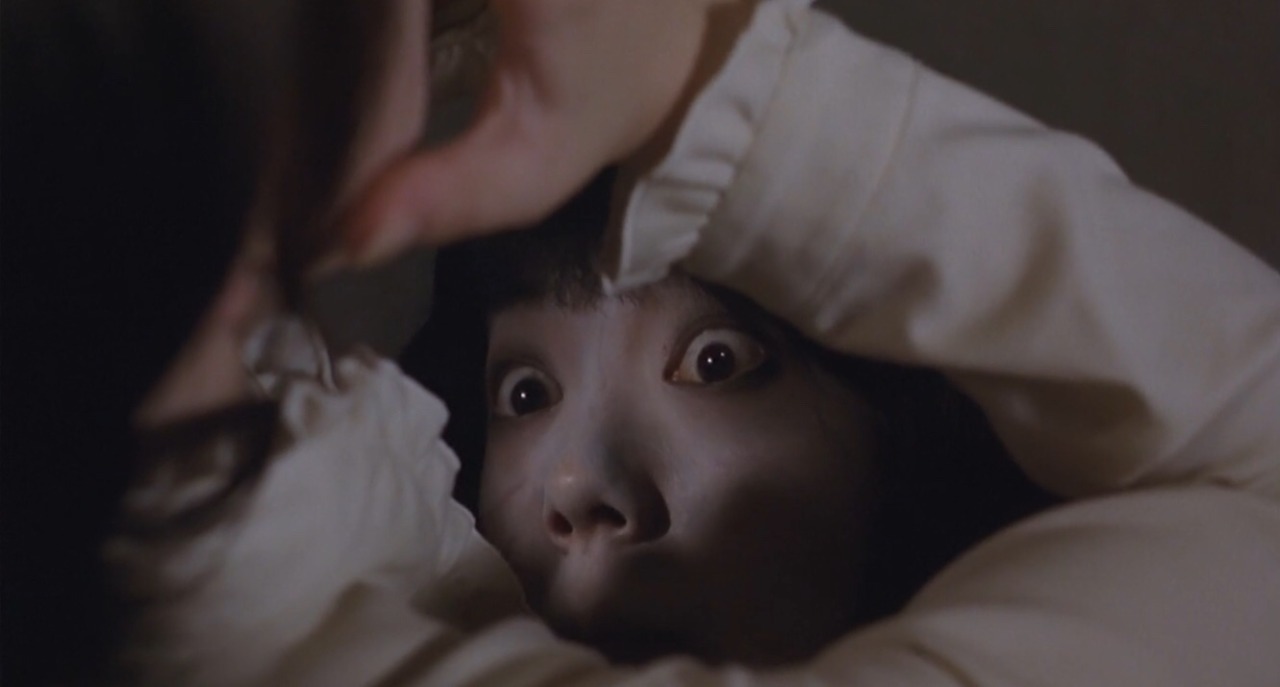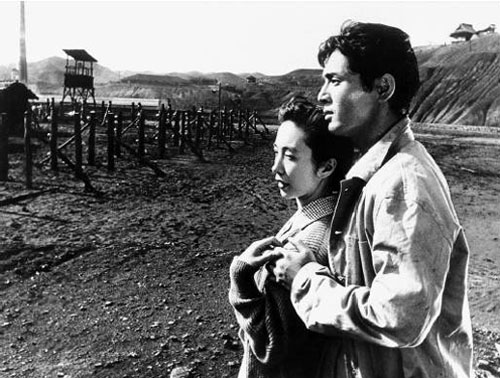
Ju-on: The Grudge (2002) – A Japanese Horror Classic
mikephilipsforcongress.com – Released in 2002, Ju-on: The Grudge, directed by Takashi Shimizu, is one of the most iconic and influential films in the Japanese horror genre (J-horror). Known for its unsettling atmosphere, non-linear storytelling, and terrifying ghostly figures, Ju-on: The Grudge tapped into primal fears and became a global phenomenon, cementing its place in horror cinema history. The film’s unique structure, eerie visuals, and effective use of sound have made it a standout in the genre and a source of inspiration for numerous horror films worldwide.
Plot Overview: The Curse of Ju-on
Ju-on: The Grudge tells the story of a deadly curse born from a powerful rage caused by a brutal act of violence. According to the film’s lore, when someone dies in a fit of extreme anger or sorrow, a curse is left behind, infecting the place of death and anyone who comes into contact with it. The curse spreads like a virus, dooming all who encounter it to a tragic and violent end.
At the center of the curse is a house in suburban Tokyo, where the vengeful spirits of Kayako Saeki and her son, Toshio, linger after being brutally murdered by Kayako’s jealous husband. The film follows several characters, including a social worker, detectives, and residents of the cursed house, as they become entangled in the terrifying grip of the Ju-on curse. Each person who encounters the house experiences disturbing and supernatural events, leading to their eventual demise.
What sets Ju-on: The Grudge apart is its non-linear narrative structure. The film presents the events out of chronological order, creating a fragmented, puzzle-like viewing experience that mirrors the chaotic and disorienting nature of the curse itself. As the film progresses, the pieces of the story come together, revealing the full scope of the tragedy and the curse’s relentless spread.
Themes: The Inescapable Nature of Vengeance
One of the central themes of Ju-on: The Grudge is the inescapable nature of vengeance and the destructive power of unresolved anger. The curse, embodied by the ghostly figures of Kayako and Toshio, represents the lingering trauma and horror of domestic violence, which continues to haunt those who come into contact with it. The cyclical nature of the curse highlights the futility of trying to escape one’s fate once it has been set in motion.
The film also explores the idea of fear as an inherited and contagious force. The curse doesn’t only affect those directly involved in Kayako’s murder; it spreads indiscriminately to anyone who enters the house or interacts with its cursed inhabitants. This creates a pervasive sense of dread, as characters—and the audience—realize that there is no way to outrun or avoid the curse once they’ve been marked.
Furthermore, Ju-on taps into the cultural anxieties of modern Japan, particularly the isolation and detachment experienced in urban environments. The characters are often alone or estranged from their loved ones, and their inability to protect or connect with others intensifies the sense of helplessness.
Iconic Ghosts: Kayako and Toshio
One of the most memorable aspects of Ju-on: The Grudge is its portrayal of ghosts, particularly Kayako and Toshio, who have become iconic figures in horror cinema. Unlike traditional Western ghosts, who often haunt specific people or objects, the spirits in Ju-on are tied to the curse itself, appearing without warning to anyone who crosses their path.
Kayako, with her deathly pale skin, twisted movements, and eerie croaking sound, is the embodiment of pure terror. Her slow, deliberate movements and inhuman appearance create an atmosphere of mounting dread, while her unnerving, guttural vocalizations signal her imminent arrival. Toshio, her young son, is equally terrifying, often appearing in unexpected places with wide, haunting eyes and a cat-like wail. Together, they represent an unstoppable force of vengeance, with no remorse or mercy.
The film’s use of these spirits differs from many traditional haunted house films. Kayako and Toshio don’t just linger in the house—they actively pursue their victims, appearing in everyday locations like schools, apartments, and workplaces. This sense of omnipresence makes the film even more terrifying, as there is no refuge or safe space once you’ve encountered the curse.
Cinematic Techniques: Atmosphere, Sound, and Visual Horror
Takashi Shimizu’s direction in Ju-on: The Grudge is marked by an emphasis on atmosphere and psychological horror. The film relies on its haunting visuals, eerie sound design, and minimal use of music to create an oppressive sense of dread. The use of shadows, muted colors, and claustrophobic spaces enhances the film’s sense of unease, while the absence of a conventional soundtrack allows the ambient noises—creaking floors, distant cries, and the unsettling croak of Kayako—to take center stage.
The film’s jump scares, while effective, are not the sole source of its horror. Instead, Ju-on relies on building tension through long, silent takes and slow, deliberate pacing, letting the fear gradually sink in. Shimizu frequently uses wide shots and reflective surfaces to show characters unknowingly sharing their space with the spirits, heightening the sense of the supernatural invading the ordinary.
The non-linear structure of the film adds to its sense of disorientation, forcing the viewer to piece together the timeline while grappling with the escalating terror. This fragmented narrative not only reflects the chaotic nature of the curse but also makes it difficult to predict what will happen next, keeping the audience constantly on edge.
Influence and Legacy
Ju-on: The Grudge was a major success in Japan and quickly gained international recognition, helping to popularize J-horror outside of Japan. Its success led to several sequels and spin-offs, as well as an American remake, The Grudge (2004), also directed by Takashi Shimizu. The film played a significant role in the global resurgence of interest in supernatural horror and paved the way for other Japanese horror films, such as Ringu (1998) and Dark Water (2002), to find international audiences.
The film’s minimalist, atmospheric approach to horror influenced a new wave of ghost stories and supernatural thrillers, particularly in the West, where filmmakers began to adopt elements of J-horror’s slow-burn tension and psychological complexity. The iconic imagery of Kayako and Toshio has become synonymous with the genre, and their influence can be seen in numerous horror films that followed.
Conclusion: A Horror Masterpiece That Endures
Ju-on: The Grudge remains one of the most influential and terrifying horror films of the 21st century. Its innovative structure, haunting atmosphere, and relentless sense of dread have cemented its status as a modern horror classic. By combining traditional Japanese ghost lore with a fresh, psychological approach to fear, Takashi Shimizu crafted a film that continues to resonate with audiences around the world.
For fans of horror, Ju-on: The Grudge is an essential watch—its chilling imagery, iconic ghosts, and masterful suspense offer a unique experience that leaves a lasting impression long after the final scene fades to black.


